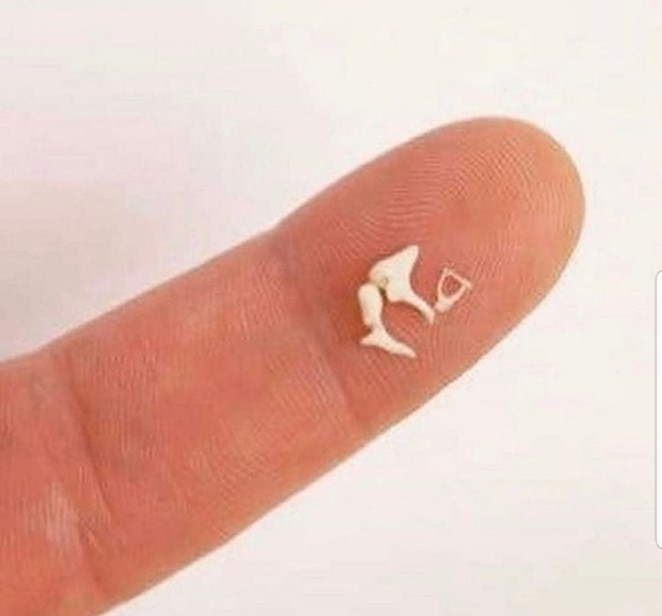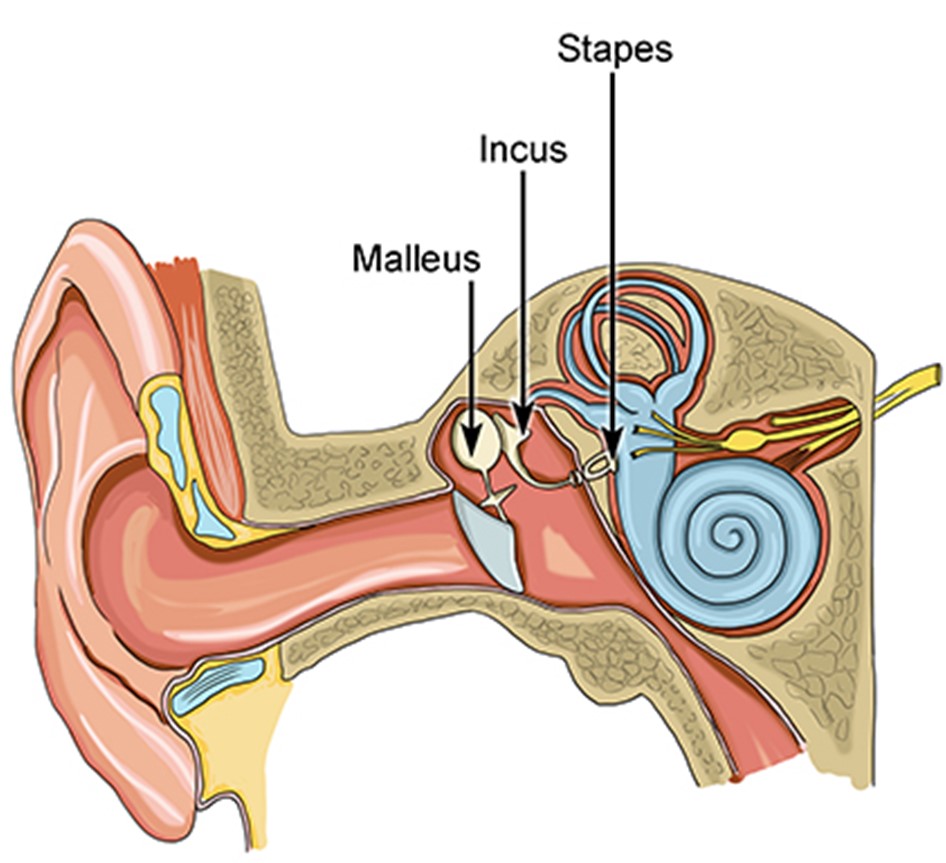 Halloween is just around the corner, and you may already have seen your fair share of creepy creatures and skeletons. How convincing are they? Here’s a fun fact to enlighten the next skeleton who comes to your doorstep: there are between 206-213 bones (varying depending on ribs, vertebrae, and digits), and the smallest bones in your entire body are located in the middle ear! These bones are called the malleus, the incus, and the stapes, and they play a very important role in your hearing and overall health.
Halloween is just around the corner, and you may already have seen your fair share of creepy creatures and skeletons. How convincing are they? Here’s a fun fact to enlighten the next skeleton who comes to your doorstep: there are between 206-213 bones (varying depending on ribs, vertebrae, and digits), and the smallest bones in your entire body are located in the middle ear! These bones are called the malleus, the incus, and the stapes, and they play a very important role in your hearing and overall health.
The malleus is connected to the eardrum, so when a sound travels through the ear canal and vibrates the eardrum, the malleus is also vibrated. The vibration then carries through the incus and into the connecting stapes. The stapes gently vibrates the cochlea, which is a snail-shaped structure filled with fluid and tiny nerve endings. These nerve endings carry the vibrations that it receives into the brain, and this is how our brain understands sound, pitch, and volume.
 These bones are so small and delicate – so what happens if there is a problem with how these bones are formed, or if they become damaged? These bones are our connecting link to healthy hearing, so any deformation of the bones will cause hearing loss. Sometimes though, the middle ear bones can be repaired or replaced using surgery. We know that hearing loss is linked to a number of health complications, such as cognitive decline, falls leading to hospitalization, isolation, depression, and fatigue. And for children left with untreated hearing loss, problems with communication, learning, and socialization can occur (visit our For Kids section for more information).
These bones are so small and delicate – so what happens if there is a problem with how these bones are formed, or if they become damaged? These bones are our connecting link to healthy hearing, so any deformation of the bones will cause hearing loss. Sometimes though, the middle ear bones can be repaired or replaced using surgery. We know that hearing loss is linked to a number of health complications, such as cognitive decline, falls leading to hospitalization, isolation, depression, and fatigue. And for children left with untreated hearing loss, problems with communication, learning, and socialization can occur (visit our For Kids section for more information).
Our smallest bones are certainly worth protecting! But if they are inside of our ears, how do we make sure they are kept well throughout our lifetime? The first thing to remember is to protect yourself from excessive noise. If you’re going to a concert or fireworks show, or if you enjoy loud hobbies such as hunting, motorcycle riding, boating, or woodworking, for example, be sure to always have some earplugs handy to place securely in your ears before the loud sounds begin. Loud noises can damage the fragile inner workings of your ear and create permanent hearing loss.
As aging occurs, you may have heard (or felt) the often-used phrase “things just don’t work like they used to”. For many, this is also true for our sense of hearing. Our ears are always on, and these tiny bones and nerve endings have carried us through every second of our lives. Even if you don’t think you have a problem with your hearing, it’s best to add a hearing test with a licensed hearing professional to your annual wellness routine. Hearing loss can come on gradually, and may not even be noticed for a long time. Everyday sounds start to slip from our memory, and our risk of health issues like the ones stated above start to grow.
The good news is, hearing loss doesn’t have to be scary. Licensed professionals can do a quick test of your hearing capabilities, diagnose the cause of your hearing loss, and suggest some really neat hearing technology that can not only treat your specific hearing loss, but can also connect you with other pieces of technology like your smartphone, TV, and other Bluetooth accessories. For any questions you may have, or to simply stay on top of your health, reach out to a licensed hearing professional today.